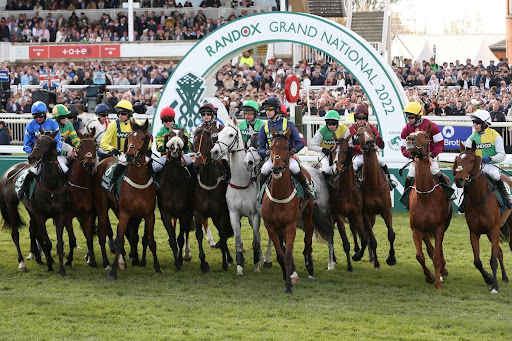Remembering Manifesto: The horse with the most runs in Grand National history

In the illustrious history of the Grand National, there have been many legendary horses whose names are sewn into the fabric of the prestigious steeplechase.
This year, Corach Rambler is hoping to join the shortlist of back-to-back winners of the four-mile, two-furlong showpiece — as he’s the 9/2 favourite in the Aintree Grand National 2024 odds.
Among the array of already esteemed champions stands Manifesto, a remarkable horse whose indomitable spirit and unwavering determination captivated the hearts of racing enthusiasts — cementing his place in National Hunt racing folklore.
Manifesto’s extraordinary story is one of resilience, perseverance, and unmatched longevity. Foaled in 1888, this bay gelding would go on to become one of the most enduring figures in the history of the Grand National — with his incredible legacy still often talked about over 130 years on.
Owned and bred by Harry Dyas, Manifesto made his Grand National debut in 1895 having already won the Irish Champion Steeplechase and the Lancashire Chase — going on to finish a respectable third in his inaugural outing at Aintree.
Little did anyone know at the time, but that was the first of what would transpire to be eight attempts in the Grand National throughout a renowned career for Manifesto — an achievement that remains unmatched to this day and will unlikely ever be emulated.
Dyas took the reins himself in 1896, but the owner’s hopes of riding his horse to Grand National glory ended abruptly as he devastatingly fell at the first fence after colliding with Redhill in mid-air.
12 months later, with a new trainer at the helm in the form of Willie McAuliffe and Terry Kavanagh back in the saddle, Manifesto won his maiden Grand National by a commanding 20-lengths clear of Filbert after his nearest rival Timon fell three out from the finish.
Manifesto was sold to J.G. Bulteel for £4,000 in 1898 and his new owner sent him to Willie Moore’s yard, but the horse didn’t get a chance to defend his Grand National crown as he sustained an injury after breaking loose from his stable.
Disaster almost struck again in 1899, as Manifesto lost his footing upon landing at the Canal Turn. However, the horse and jockey George Williamson miraculously managed to continue the race and went on to win a second Grand National by five lengths.
On the back of his two victories, Manifesto was given an insurmountable weight of 12st 13lbs in 1900. That made all the difference in the Aintree odds, as he could fare no better than third as Edward VII’s Ambush II won the Grand National.
Having missed the race again in 1901, Manifesto would go on to record two further third-place finishes in 1902 and 1903, respectively. His final Grand National attempt was in 1904, and he came home in eighth at the grand age of 16.
Manifesto’s legacy extends far beyond his victories on the racetrack. His enduring spirit and tenacity serve as an inspiration to all who admire the sport of horse racing.
Despite facing countless challenges and obstacles throughout his career, Manifesto never wavered in his pursuit of greatness — embodying the true essence of the Grand National and the spirit of the sport.
Following his retirement from racing, Manifesto lived out his days in peaceful retirement, enjoying the adoration of fans who continued to flock to see the legendary “Iron Horse.”
He passed away in 1917 at the age of 29, leaving behind a legacy that continues to resonate within the racing community to this day.
